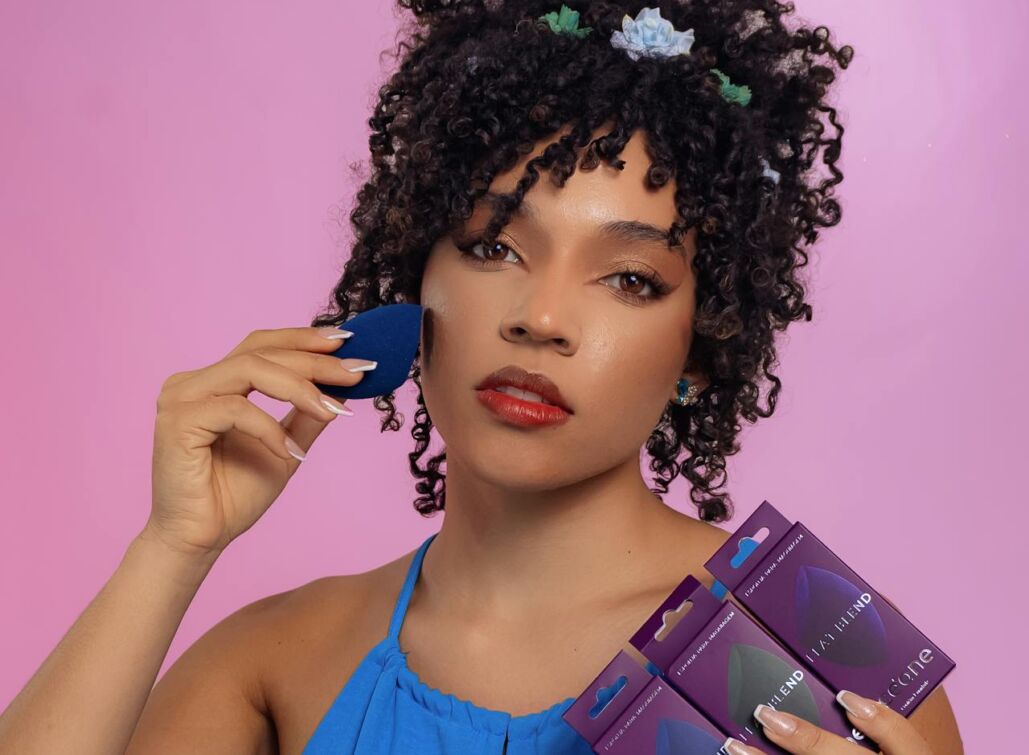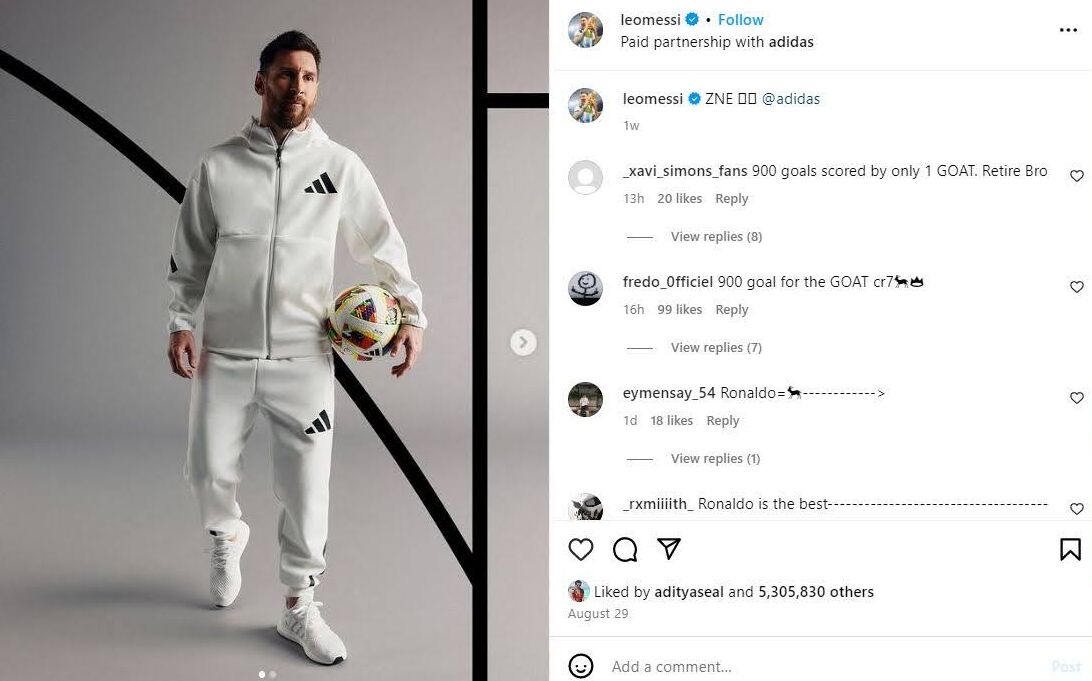Influencer marketing has become a go-to marketing tactic for many businesses, and for good reason. If Cristiano Ronaldo promoted a particular Nike product on Instagram, his millions of followers would quickly become aware of it.
Or, if Gigi Hadid would promote a particular beauty product on her social media, her followers would most likely purchase it, given her massive influence in the beauty industry.
This is the power and magic of influencer marketing: leveraging the reach and impact of well-known individuals to endorse products or services.
With around 72% of Gen Zers and Millennials following influencers on social media, marketers believe that influencer marketing is a crucial strategy to fuel brand growth. Also, 69% of marketers plan to increase their influencer marketing budget in 2024.
In this blog, we will explore the concept of influencer marketing and how you can use it to grow your business. Let’s begin.
Influencer Marketing: What Is It and Its Role
Influencer marketing involves brands partnering with popular individuals to increase their visibility on the Internet.
These influencers have committed fans on social platforms and are regarded as authorities in their specialized field, often impacting buying choices. In fact, in the past year, 33% of Gen Z and 29% of Millennials in the U.S. purchased a product from a brand introduced by an influencer.
Businesses can connect with their potential customers easily by utilizing the existing audience of an influencer, rather than building a new one from the ground up. Thus, businesses can successfully engage their customers, leading to 63% lower customer attrition.
With the rise of technology, we are also seeing influencers embracing digital tools and innovations like AI companions, which assist them in managing their vast audiences and personalizing interactions on social media. These virtual assistants can help influencers curate content more effectively, respond to fans in real-time, and maintain engagement across multiple platforms.
Types of Influencers: By Size and Reach
Some influencers have a large audience base spanning across several demographics. Others may have smaller but more active and engaged communities. Knowing these types can help you choose the right influencer for your brand.
1. Mega Influencers
Also known as celebrity influencers, these are individuals with a massive following on social media. Now, if you are wondering, these influencers have over 1 million followers. That’s huge, right?
These influencers are typically famous actors, athletes, performers, and other public figures. They use their fame to attract a huge following and promote widespread recognition for companies.
For instance, Adidas partners with Leo Messi to introduce new products.
The most obvious downside of collaborating with these influencers is the cost. They typically charge a hefty amount for every single endorsement (Kylie Jenner charges $1.8 billion per post, duh!). Also, since their audience pool is so huge and diverse, the engagement rate may not be very high.
2. Macro Influencers
Macro influencers are a notch down from mega influencers, with a following between 100,000 and 1 million followers.
Most macro influencers have earned such massive following through consistent content creation on social media. Over time, they have established themselves as experts in their niche.
These influencers are often invited to speak at or attend large-scale events, where event digital signage plays a crucial role in enhancing the experience and engagement. Event organizers are increasingly using innovative digital signage solutions to create immersive environments and showcase influencer content effectively.
3. Micro Influencers
These influencers have between 10,000 and 100,000 followers. As opposed to mega and macro influencers, these individuals have a much smaller but engaged community. They typically focus on a particular niche and are considered subject matter experts.
Working with a micro influencer can expose your brand to a highly active community of people.
4. Nano Influencers
Last but not least, nano influencers are those with a following that ranges between 1,000 and 10,000 followers. To the surprise of many, nano influencers consistently secure the highest engagement rates across all platforms, marking an average rate of 4.39%.
These influencers share a strong bond with their audience – one that they have built through trust and sharing personalized content. They can be ideal for brands that have a specific demographic in mind and a smaller marketing budget.
How to Set Goals for Your Influencer Marketing Campaign
Every influencer marketing campaign must begin with clearly outlining the goals and objectives.
Once you know your goals, it becomes much easier to find the right influencer.
Setting clear and realistic goals for your influencer marketing campaign is crucial. It not only guides your strategy but also helps you measure success and refine your approach for future campaigns.
— Vineet Gupta, Founder of 2XSAS
Here are some key questions to ask yourself to determine your marketing campaign goals:
- What is my main objective? – Is it brand awareness, follower engagement, localization or driving sales?
- Who is my target audience?
- Which platforms should I focus on? – Where does my audience engage most: Instagram, TikTok, YouTube, or elsewhere?
- What metrics will define success? – Will I measure engagement, clicks, conversions, or follower growth?
- What is my budget for influencer collaborations?
- What type of content will resonate best with my target audience?
- How will I track the performance of the campaign?
Addressing these simple questions will help you clearly outline your influencer marketing campaign objectives.
Steps to Find the Right Influencers for Your Campaign
What is the best way to find the ideal influencer for your campaign from the many choices available?
Finding the ideal influencer for your campaign should not pose a challenge. Once you have established your campaign goals and selected your preferred marketing tools, such as Omnisend or Omnisend alternatives, you should proceed with the following steps:
1. Establish your influencer and creator personas
In order to discover the perfect influencer, you need to specify the qualities you seek in the person.
Begin by asking about the following queries as an example:
- What is your ideal influencer’s area of expertise?
- What is their personality type and how does it complement your brand voice?
- What are their beliefs and how do they align with your brand values?
- Who is their audience?
Attempt to respond to these questions with as thorough explanations as you can. This will assist you in creating a perfect profile of an influencer who is most suitable for your campaign.
If your goal is to promote a food eCommerce business, ensure the influencer has a strong presence in that industry and engages with an audience that aligns with your target market.
2. Start searching for influencers
Now, it’s time to begin your search. Here are a few different ways to explore and locate the ideal talent.
- Look for hashtags connected to your field: Many social media sites, like Facebook and Instagram, allow you to explore hashtags. Browse through hashtags associated with your specific product, field, or category to identify influencers discussing these subjects.
- Begin with one influencer and then search for related accounts: It may be possible that you have one or two influencer names on the top of your head. Start with them and look for related accounts. This will help you see similar influencers. For instance, on YouTube, you can see profiles of similar influencers appear in the ‘Related’ tab.
- Check out influencers your competitors are working with: Identifying the influencers your competitors are working with can help you relatively narrow down your search.
- Explore Facebook groups: Many influencers participate actively in specialized Facebook communities related to their interests, where they post content, provide guidance, and interact with other members. Through monitoring Facebook group conversations and participation, you can identify possible influencers with a powerful, genuine online presence. But always make sure to follow the standard Facebook group rules.
- Use an influencer marketing platform: Several agencies and marketing platforms can use APIs for influencer marketing to help you scout and vet the most talented influencers. These platforms offer massive searchable databases of potential influencers with advanced filters to make the process a lot easier. Upfluence, Grin, Creator.co are just a few examples.
These simple steps will help you identify the best influencers within your niche. You can also check out this guide for more detailed information on finding Instagram influencers.
3. Determine your influencer selection criteria
An influencer’s audience size isn’t the only criteria you must consider before choosing to work with any individual. There are other things you must look at, such as:
- Engagement rate: It indicates how well an influencer’s content performs with their audience. Typically, an engagement rate between 1% and 3% is considered standard. Anything below 1% is bad.
- Authenticity: Make sure the influencer has gained his following through organic methods.
- Posting frequency: A good influencer typically has a consistent posting schedule.
Also, ensure your chosen influencer creates content that caters to a diverse audience. For instance, some influencers use best text to speech tools to make their content more accessible to visually impaired users. This further broadens your brand’s reach.
Here’s how you can be sure to make the right choice. Sotrender’s influencers analysis report is designed to help brands precisely match influencers with their campaign goals and target audience. It provides detailed insights into influencers’ content, engagement metrics, and audience demographics to ensure a perfect fit for your brand’s strategy.
The report also highlights potential risks, such as influencer credibility or audience mismatches, allowing you to make informed decisions.
Whether you’re looking to partner with mega influencers for wide reach or micro influencers for niche engagement, Sotrender helps streamline the selection process, ensuring that your collaborations drive maximum results and brand alignment.
4. Negotiate compensation and deliverables
Different influencers work with different types of compensation models. For instance, some influencers ask for monetary compensation whereas others request a gifted product. That is why it’s crucial to communicate your intentions and offer deals clearly. It’s advisable to use some of the influencer collaboration email templates to help you build deeper connections with the influencer.
Another compensation technique is affiliate marketing, i.e. when a brand offers a special discount code for the influencer’s audience, persuading them to make a purchase. The influencer will get a small percentage every time the code is used at checkout.
Determine your campaign goals and choose the compensation model that works best for you.
Key Metrics and KPIs to Track in Your Campaign Report
When starting a campaign, you should monitor specific metrics to assess how well it is performing.
The specific influencer marketing goals you have will determine which metrics you should prioritize. Some metrics are common vanity metrics while others can be more meaningful for your case and closer to your business objectives. Nonetheless, you should keep an eye out for these frequently seen examples:
- Reach: It refers to the overall amount of distinct social media users who viewed the promoted content. Increased brand awareness is typically a result of having a broader reach.
- Engagement or Interaction rate: It is the proportion of individuals who engaged with the material compared to the overall number of followers on the influencer’s social media profile. Typically, an engagement rate above 3% is seen as excellent.
- Views: This metric is only for videos and Stories. A high number of views means that the influencer’s content was engaging and fun to watch.
- Follower growth: This is the uptick in the follower count after the influencer’s post went live. You can compare the number of followers before and after the campaign to determine the growth rate.
- Link clicks: If driving traffic to your website is your primary goal, this is the metric you must track. Make sure to append UTM tracking parameters to the given link to conclusively isolate the traffic coming from your influencer’s posts from your routine web traffic.
- Conversions: This metric in ad tracking software helps determine the number of sales generated by the campaign.
- Positive sentiment: This is a crucial metric that allows you to understand how well the influencer’s content resonated with the audience. Whether or not the followers seemed to attach any value to your brand.
Using the Microsoft Kanban board app can help you organize and keep track of these collaborations, making sure your influencer marketing strategy runs smoothly.
Case Studies: Successful Influencer Marketing Campaigns
Now let’s look at some brilliant examples of influencer marketing campaigns and how they achieved notable outcomes.
Inkbox
Inkbox, a tattoo company based in Toronto, executed a successful promotional campaign in 2022 for the launch of its extended Freehand Tattoo Marker collection.
The company distributed items to 200 influencers, specifically targeting those who had prior experience and satisfaction with Inkbox. The aim was to create genuine, natural content from these influencers, fostering a sense of positivity and recognition for the new collection.
The campaign involved more than 70 creators, reaching over 800,000 people. By achieving a 40% unprompted posting rate, Inkbox created twice as much content, resulting in a collection of high-quality content for future marketing endeavors. Several creators also moved on to become long-term brand ambassadors.
Daniel Wellington
Daniel Wellington, the luxury watches and accessories brand, has repeatedly demonstrated how businesses can boost their ROI through influencer-generated content.
Teaming up with micro and nano influencers, the brand boosted its hashtag #danielwellington to enhance brand recognition and visibility. To date, it has collaborated with over 10,000 creators worldwide and produced over 2 million posts using its branded hashtag. All this helped the brand build an undeniable online presence and take its sales through the roof. You can use any good hashtag generator tool to generate relevant and engaging hashtags for your brand campaign.
Final Thoughts
Influencer marketing provides a strong method to engage with your audience and increase brand exposure. By establishing specific objectives and identifying appropriate influencers, you can develop genuine campaigns that produce significant outcomes.
Use this guide to discover the ideal influencers for your marketing strategy and achieve unprecedented business success.














